By: Thorsten Overgaard. July 8 2016 (Latest edit December 15, 2018).
Add to Flipboard Magazine.
Batteries are considered dangerous goods. I learned it the hard way; I got a new camera delivered without any batteries.
You can get into trouble sending and transporting camera batteries. You should know the rules for what you can ship as air freight and what you can bring with you on airplanes.
The short story is that camera batteries are allowed as carry-on baggage, almost as many as you want.
But that's not the idea you get when you see what airlines say about you carrying batteries onboard an airplane. You might stumble into some official who’s heard about the dangers of batteries and thinks it's illegal to carry batteries. Southwest is one airline that thinks so. More on that, later.
It is not illegal to carry batteries, but what are you going to say? "I need batteries" is not going to help, and "But I always travel with my batteries" is not going to help either. Knowing the rules is the way, so here they are.
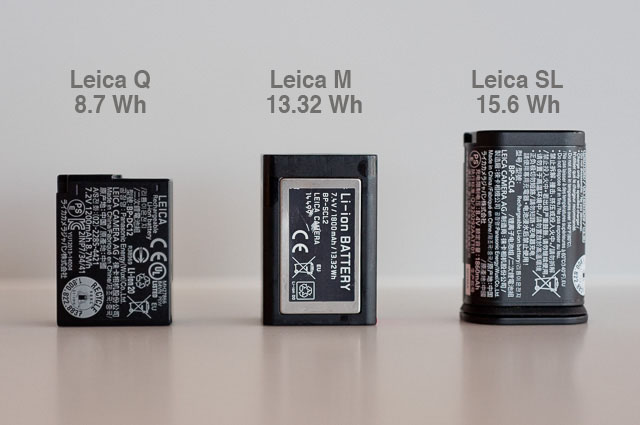
Leica batteries are in the low end of batteries, as most camera batteries are. They are all allowed as carry-on on airplanes. As many as you like.
Trouble starts above 160 Wh
Batteries (and their potential as explosives) are measured in Wh (Watt Hours). Most batteries you can think of carrying are 5-20 Wh and thus way below the limits.
Only large batteries as in wheelchairs are considered dangerous if they are 160 Wh or above. In some cases, video cam batteries and flash batteries attached to the belt could be larger than 160 Wh.
For example, the Broncolor Powerbox LP-800x Battery Inverter is 153 Wh and thus below the limit. It's 27 x 20 x 29 cm and 3.5 kg so that will give you an idea how large a battery has to be to be an actual problem traveling with! But even this size, you are allowed to carry "only" two of them in the airplane.
Batteries 99.9 - 160 Wh are limited to two carry-ons.
Download the FAA rules and print them
Download and print this PDF document and carry with your batteries, or have it on your phone/computer just in case. This is the important part:
| |
|
|
| |
The FAA regulations specifically state:
"Passengers may carry all consumer-sized lithium ion batteries (up to 100 Wh per battery).
With airline approval, devices can contain larger lithium ion batteries (101-160 Wh), but spares of this size is limited to two batteries on carry-on baggage only." |
|
| |
Download the FAA rules as PDF
|
|
I generally have 5-10 spare batteries in my carry-on camera bag. They’re all Leica and they are from 5 to 16 Wh which means that they are considered small batteries. There is no limit for how many batteries I may carry with me.
What is my Leica batteries in Watt Hours (Wh)?
The way to calculate the Wh value of your batteries is the Voltage (V) x Amp Hours (Ah).
 |
| Leica SL |
|
Leica M 240 |
|
Leica Q |
|
Leica M9 |
|
MacBook Pro |
 |
| 8.4V x 1860 mAh |
|
7.4V x 1800 mAh |
|
7.2V x 1200 mAh |
|
3.7V x 1800 mAh |
|
|
 |
| 15.6 Wh |
|
13.32 Wh |
|
8.7 Wh |
|
6.7 Wh |
|
99.5 Wh |
 |
So all these Leica batteries are in the category of spare batteries you can carry as many as you want of, as long as they are for personal use.

Leica batteries are in the low end of batteries, as most camera batteries are. There is no limit for how many of them you may carry with you on an airplane.
What batteries you may carry onto an airplane
Less than 101Wh (for personal use in carry-on)
Most batteries you can get for phones and cameras are in this category. Per FAA and most airlines, there is no limit for small batteries like these, carried inside a camera, or as extra batteries outside, as long as it is for personal use and in carry-on. You can't bring a box of batteries for resale. Cathay Pacific says batteries are allowed inside equipment, plus 20 spare pieces allocated per passenger. They require that the batteries are either in original packaging or in each their plastic bag (the Leica SL spare batteries comes with a plastic zip-lock bag for each battery).
Batteries 101Wh - 160Wh
For large batteries up to 101Wh - 160Wh there is a limit of two spare batteries (per person it seems) in carry-on luggage for some airlines, others don't allow them.
In checked-in luggage these are not allowed as spare batteries, only inside equipment.
Larger than 160 Wh
For very large batteries above 160Wh the device with battery, as well as spare batteries are not allowed as carry-on and must be sent as freight under the IATA Dangerous Goods regulations.
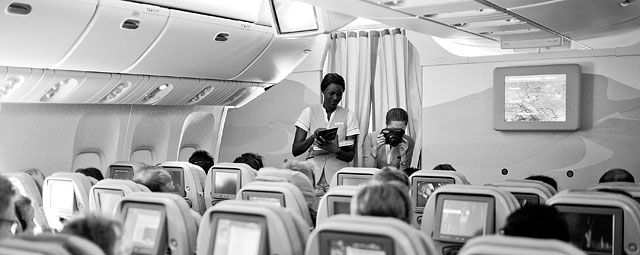
The Emirates stewardesses doing Polaroid photographs of the passengers. Leica M9 with Leica 35mm Summilux-M ASPH f/1.4 AA. © 2014-2016 Thorsten Overgaard.
How did I get into the battery controversy?
When I was in Hong Kong back in November 2015, the Leica Store Salzburg mailed me that they had my Leica SL ready for me. "Where do you want us to send it?" the mail asked.
I happen to have a company in Hong Kong so it seemed a great idea if they shipped it to that. I would have it in a couple of days.
Everything was good till DHL picked it up in Salzburg. Then hell broke loose! (Well, actually they forgot to pick it up for four days but in light of what else happened, that is a minor detail in this express shipping drama).
What happened was that DHL scanned the box and saw that it contained two batteries! One in the original box with the camera and one extra battery in its original packaging.
It so happens that Cuba founded an organization in 1945 that deals with air freight, and they have determined that batteries are dangerous goods.
DHL kept the box in the DHL facility in Austria for another three days, unable to move the box because of the dangerous content. They wouldn't drive it back to Salzburg and they wouldn't let it on an airplane.
| |
|
|
|
|
| |
Buy my "New Inspiration Extension Course"
|
|
| |
|
|
|
|
| |

Need more info?
Read this article. |
|
Get inspired and rebooted!
This extension course if made for you! It can be done at home and travel at your own pace. I have taught workshops for years and the Overgaard New Inspiration Extension Course is my experience compressed to a package of training, articles, drills, assignments and video tutorials that will inspire you and take your photography to the next level! For a limited time my course includes something you cannot get anywhere or anytime else:
A portfolio-review by Thorsten Overgaard.
| |
|
|
| |
"The Overgaard
New Inspiration
Extension Course"
For computer and iPad. 181 p eBook. |
|
| |
Only $798 |
|
| |
|
|
| |
 |
|
| |
|
|
| |

|
|
| |
|
|
Order now - Instant delivery. |
|
| |
|
|
|
|
A sticker on the box would be sufficient, but they wouldn't put it on if we sent them one. And they wouldn't let the box go anywhere.
We pounded on them. Their press department, Twitter and anyone we could get ahold of. DHL Singapore, Hong Kong, USA, Austria and Germany were running in circles and what could have been a simple paper procedure had become a nightmare of 10 days "express" shipping with content missing and some very stubborn European security policies that make no sense - so that is why they must be followed with extra strictness!
DHL Singapore dedicated a staff member to call me and keep me informed at all times, and checked with the other countries. Everybody else at DHL seemed to duck under their office desks.
Leica Gallery Salzburg had several discussions with DHL Austria and finally they broke under pressure and DHL agreed they would open the box, take the two batteries out and destroy them!
Since then, nobody has heard anything from DHL Austria.
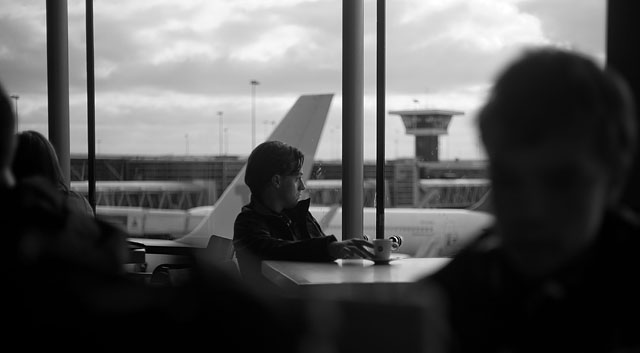
Amsterdam Airport. Leica M9 with Leica 50mm Summicron-M f/2.0 II. © 2011-2016 Thorsten Overgaard.
Hurray, a Leica SL without batteries!
I had flown to Singapore meanwhile, and the DHL box finally arrived to me there more than a week later than expected. A lot of the frustration on my part didn't have to do with the batteries, but with the fact that I would not be able to use the brand-new camera model, one of the first ones delivered in the world.
How are you going to use a camera without batteries?
I played around with it. In the rain and the sand and considered putting it on fire. There is, after all, a number of tests you can perform on a camera without batteries.
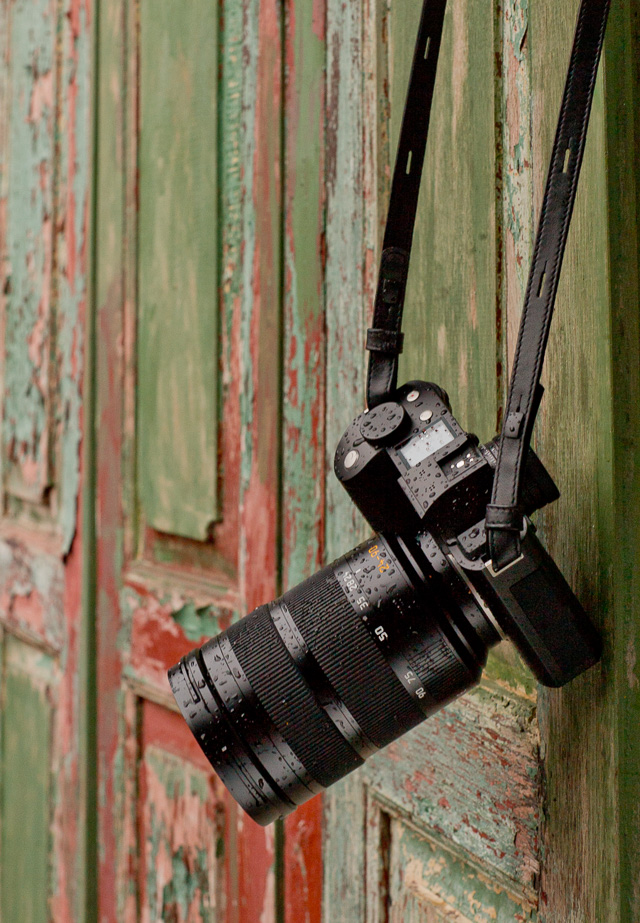
A Leica SL in the Singapore rain, without batteries. © 2015-2016 Thorsten Overgaard.
Getting batteries from one place to another?
Essentially, DHL and other freight companies only allow batteries inside the devices they are supposed to be used for.
It seemed impossible to send batteries from one place to another by car or airplane, according to the rules. But I learned that if you have to have a special certification that you are shipping dangerous goods, you can ship pallets of batteries without difficulty, as many as you want. In this case, getting the certification would take another one to three weeks.
Meanwhile studying all that, I searched high and low, from Hong Kong to Wetzlar in Germany, from Ken Hansen in New York to Camera Electronics in Perth for someone who had batteries in stock.
Nobody had any batteries!
But then ... finally a rescue letter came from Eric Hendriks, the Leica agent in Netherlands that they had several hundreds of Leica SL batteries in stock. They would be more than happy to send me three. And so they did. Those three batteries arrived two hours before I left Singapore for Perth in Australia.
After a week of having a Leica SL with no batteries, I could finally get the camera to work!
And how did they manage to ship them despite all the rules? They simply put them in an envelope and shipped them with UPS, not stating anything.
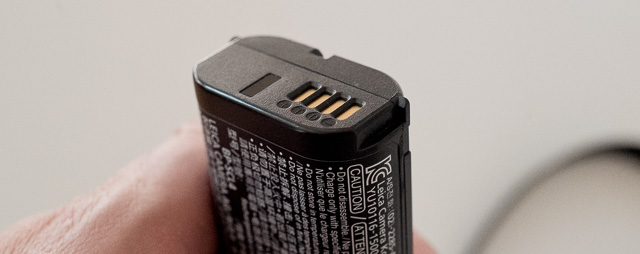
Batteries can heat up, turn on fire and create explosive gas if the contacts are short-circuited. Leica SL battery. © 2015-2016 Thorsten Overgaard.
Qantas: "You don't have spare batteries with you, do you?"
As the final irony of destiny, when I entered my Emirates flight from Singapore to Perth in Australia (operated by Qantas) the male Qantas flight attendant welcoming us to the plane asks me, "You don't have any batteries in that one?" and nodded at one of bags as I passed him down the aisle to my seat.
He didn't wait for an answer before he greeted Joy coming behind me, and I ignored his question, as it wasn't up for discussion (and he anyway had implied the answer himself). But of course Joy and I made eyes to each other, "What the heck was that?"
Nobody ever asked us that question before, and I was the only one he asked. We fly to more than 25 countries a year. I have no idea how many flights that involves, but nobody ever asked me that question before.
Being asked that question while carrying my precious three new batteries I had fought that hard to get ... oh man!
When I arrived in Perth, Australia, I Googled the rules for hand-carrying batteries with Qantas. I know thatAustralia has strict approach to fresh fruit and nuts when you enter the country. It wasn't unlikely that Australia and Qantas Air would have their own rules to batteries.
But no, Qantas follows the FAA regulations on batteries.
Southwest: No batteries at all ... what?
When checking in to a Southwest flight on-line, they carried this dramatic warning, "Federal law forbids the carriage of hazardous materials such as aerosols, fireworks, lithium batteries and flammable liquids aboard the aircraft in your checked or carryon baggage." And further down the website, "A violation can result in five years' imprisonment and penalties of $250,000 or more".
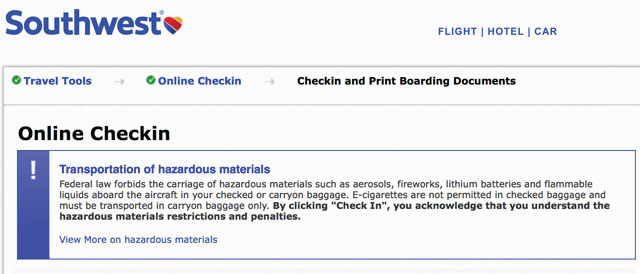
The Southwest warning not allowing any batteries is clearly a misinterpretation of the rules.
In other words, no batteries at all!
Checking into the matter, what they meant was that the FAA regulations apply: You can have batteries with you in the airplane, but not in the checked in luggage. The same regulations as always. But somehow, somebody, found it convenient to just ban everything. Which is easy if you do not fly yourself!
If you continue down to their FAQ three pages down, they link to the FAA rules, and further say, "These items must be securely installed in equipment or have exposed terminals protected in a manner to prevent short circuit. Electrical tape, individually bagging batteries in sealable plastic bags, or plastic covers designed to protect the terminals from short circuit would all meet this requirement."
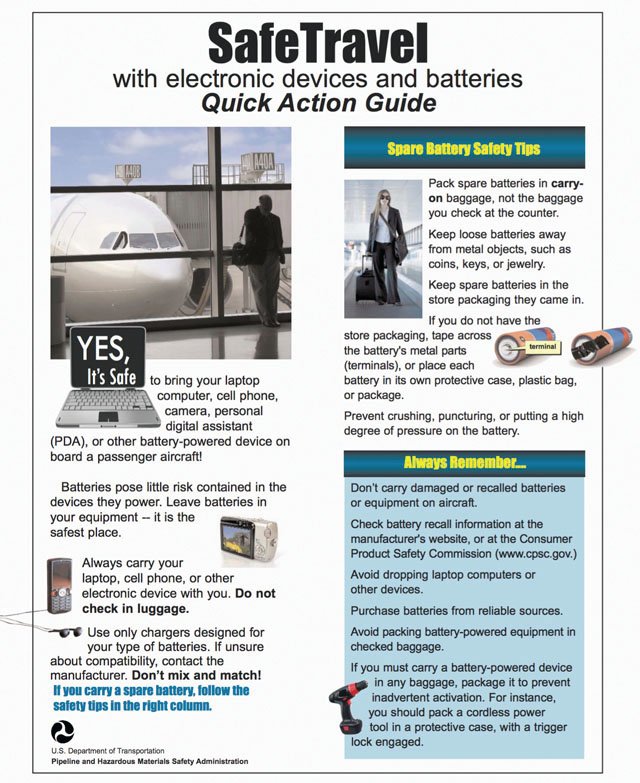
U.S. Department of Transportation's PHMSA department issued this flier above. (PHMSA = Pipeline and Hazardous Materials Safety Administration).
A Southwest spokesperson says ...
I asked Southwest's press department, and their answer was as unaware as you could fear:
"The hazmat notice you saw below is designed to make passengers aware that there are hazmat restrictions and hopefully ask questions or look into those details. (Federal law requires each carrier to notify passengers Hazardous materials restrictions at the time of ticket purchase and at the time of check-in.) Because of the many restrictions and exceptions regarding checked and carryon baggage, we’re unable to provide an exhaustive list with all of the details for various scenarios that’s quick and easy to read; however, we provide more detailed information on our website".
It took them five days to come up with that. In other words, if you travel with Southwest, you don't know if you will be fined $250,000 for following the FAA regulations, or if they in fact believe you can't have any batteries because their website said so.
You may risk that entering a Southwest airplane, and they ask you to leave your batteries behind (because their website clearly said you can't take any batteries). In my case that's more than $1,500 worth of batteries, so of couse, faced with a notice like that, and a spokesperson who doesn't know the rules, you can't fly with them.
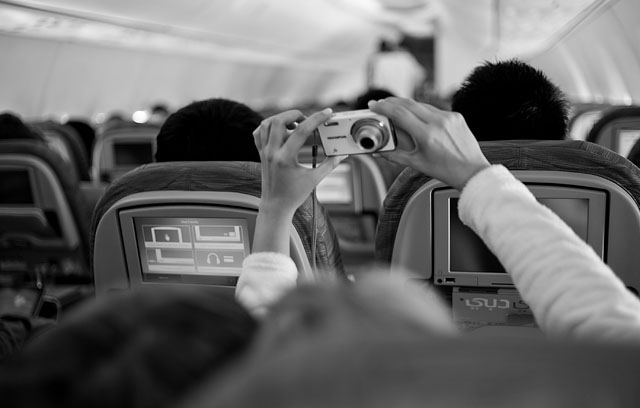
On board Air Dubai, Februar 2012. Leica M9 with Leica 35mm Summilux-M ASPH f/1.4. © 2012-2016 Thorsten Overgaard.
Print the rules for the day you run into that guy!
I've met police officers in USA who think photography is not allowed, and I've met TSA security people that thinks a S. T. Dupont gas lighter is not allowed on an airplane (because it's made of massive brass; it took 10 minutes to get a senior TSA rep who could admit it wasn't a threat). They usually don't want to discuss it, and if you try to, that in itself is a worse offence than what you started with.
In many cases, not complying to instructions from an officer is the offence in today’s society. It doesn't matter how wrong the officer is as long as he or she is the one wearing the uniform.
Copy the written rules to your phone and iPad, and make a print to have with the batteries.
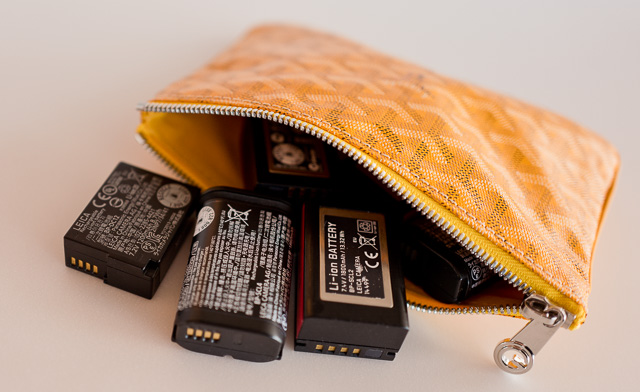
I have my spare batteries for my cameras inside a fairly thick Goyard canvas pouch and no other items of metal that could make the metal parts of the batteries come into contact with each others.
How to properly travel with batteries?
There is not much information about the proper way to travel with spare batteries, but it seems that a plastic bag around each battery will satisfy many concerns as the contacts then can't touch each other (or the contacts of other batteries).
FAA advice states: "To prevent short circuits, keep spare batteries in their original packaging, a battery case, or a separate pouch or pocket. Make sure loose batteries can't move around."
Don’t let a loose battery come into contact with metal objects (e.g. coins, keys, or jewelry).
Batteries then also shouldn't be placed where they can be heated up. Keep them in shade and not on top of warm surfaces. Batteries that are partly damaged shouldn't be used anymore.
Batteries shouldn't be in pockets or pouches or bags where metal pieces are around that could short-circuit the contacts on the batteries. If you look at a Leica SL or Leica M9 battery, the contacts are hard to get to. On the Leica M and Leica Q batteries the surfaces of the contacts are easier to get to.
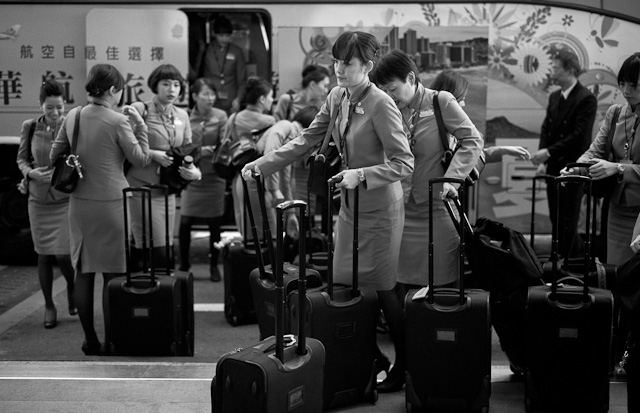
Stewardesses in Taipei Airport, Taiwan. Leica M 240 with Leica 50mm APO-Summicron-M ASPH f/2.0. © 2014-2016 Thorsten Overgaard.
How to put out a battery fire (on an airplane)
Flight attendees know how to do this and have likely tried it more times than you would care to think of.
When a battery in a smartphone, laptop or other device explodes or combusts, it usually is a short circuit of the battery. Hence it is more likely to happen in a brand new device or an older one that has taken a few beatings over time.
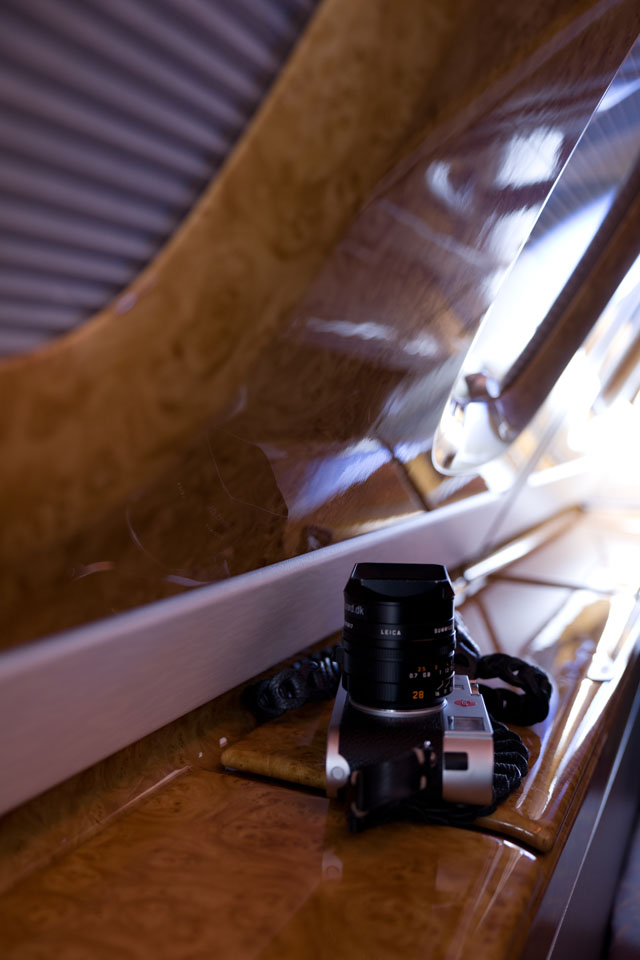
A moment of solitude on the Emirates flight. © 2016 Thorsten Overgaard.
The way it is handled is to dip the whole device (or bag with the burning device) into water. This does three things; it (1) removes the oxygen which is necessary for a fire to live, (2) cools down heat which is a necessary ingredient for a fire and (3) cools down the device which combusted because of heat.
When firemen pour water on a building it's to cool it down which will eventually put it out. Water is usually not used to remove oxygen. That is why fire is best fought with a cloud of water drops. In some countries they use water cloud, in some they drown the whole building in water to cool and remove oxygen. The latter method of drowning a place in water, the water damage usually destroy what the fire didn't destroy.
A fire blanket thrown over burning oil or any fire removes oxygen and eventually puts out the fire. You never use water on burning oil because it explodes then. In the case of batteries a blanket would too, but batteries are creating extreme heat that might burn through the blanket and put the blanket on fire as well. So, water it is. Also be aware that batteries are burning because they over-heated, so touching them is not a good idea.
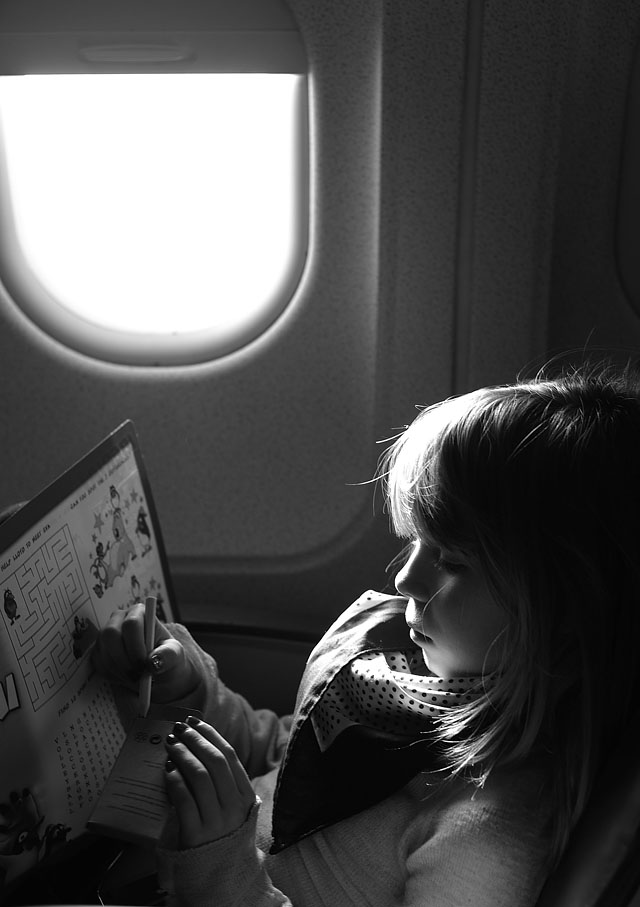
My daughter Robin Isabella enjoying the view over New York. Leica M 240 with Leica 50mm APO-Summicron-M ASPH f/2.0. © 2013-2016 Thorsten Overgaard.
Why batteries?
Why this sudden interest in batteries?
You know that you often have to take off your shoes in security in the airport. The reason for all those millions of shoes being taken off every day has to do with one incident 15 years ago (!) where a guy tried to put his shoes on fire in an airplane. One guy, and no similar cases since then.
The battery restrictions come about from speculations that some crashes might be because of batteries; but not, as you would think, your consumer batteries.
The battery restrictions comes about from speculations that some crashes might be because of batteries. But not, as you would think, your consumer batteries.
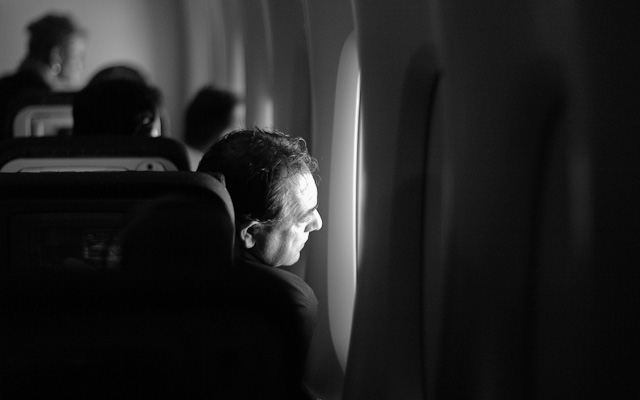
Onboard the Air France Airbus A380 from Paris to Los Angeles. Leica M 240 with Leica 80mm Summilux-R f/1.4. © 2014-2016 Thorsten Overgaard.
Airline batteries more likely
to turn on fire than consumer batteries and cargo
Crash reports seem to suggest that batteries used in the aircraft itself are more likely to turn on fire than the ones in the cargo or the ones in your bag. Here are the cases that justify the rules for carry-on and checked in batteries:
The Malaysia Airline 370 that mysteriously disappeared in March 2014, one of many unconfirmed speculations was that batteries in the cargo could have been the cause. The speculation mentioned in one of many reports is what prompted the FAA to issue a warning against batteries. The Malaysia airplane carried newly made Motorola batteries from the factory in the cargo and they might have gone on fire, creating toxic gases that would reach the cockpit and hence that could be one explanation for the lack of communication. Other theories include: terrorist hijacking, that the plane was shot down, that the US stole the plane (it's now at the Diego Garcia base), that the pilots performed an island landing (and are now eternal tourists there), plane switch, abducted by aliens, time travelers, electronic fire, "Spoofed" satellite data, crew suicide, cyber attack, use of an "unknown weapon" ... or that North Korea did it.
Nobody knows why Malaysia Airline 370 disappeared. But batteries was mentioned in a report, and somebody with time on his hands made a whole thing about the possible dangers of batteries. The FAA read it, and there you go. We now have rules about batteries.
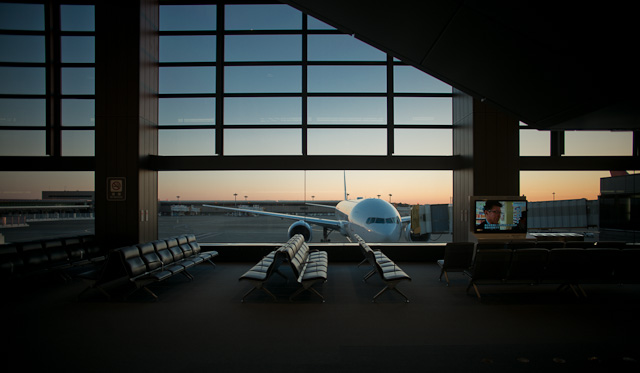
Narita Airport in Tokyo, Japan. Leica M 240 with Leica 21mm Summilux-M ASPH f/1.4. © 2014-2016 Thorsten Overgaard.
The UPS method
I might come across as cynical. It's not that I don't want airplanes to be regulated or safe, the cynicism comes about when the reasoning doesn't add up. That's applied stupidity of not knowing what caused something and making rules to avoid it happening again.
At least UPS did something that made sense. An UPS Boeing 747 freight plane crashed right after taking off on September 3, 2010 and the two pilots died. One of the possible causes mentioned was batteries carried in the plane’s cargo (pallets of batteries). This prompted UPS to issue masks for the pilots in case of a fire, and to use fireproof containers that will withstand a fire for up to four hours in the cargo.
As batteries have to be transported, that's a way of handling it. Use containers that are fire-proof.
Other possible battery fires
Often it's not known what causes fires (or plane crashes). A fire in an Ethiopian Airlines Boeing 787 at Heathrow was traced to the lithium batteries in the airplane’s emergency locator transmitters. In two cases, Boeing 787 Dreamliners have been grounded because of overheating in the airplanes lithium back-up batteries.
Here's a 2013 report about batteries from FAA that predicts six cargo airplane crashes in the next eight years, and estimates that four of them will be caused by battery fires.
In short, as a result of this, the FAA has banned transportation of batteries as cargo on passenger airplanes.
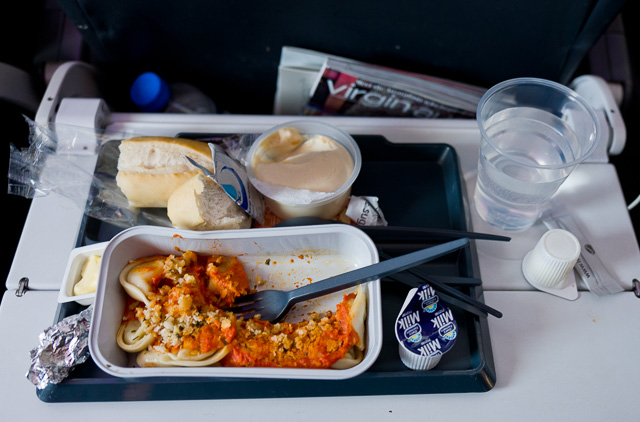
One of the real dangers of airlines: The Virgin Australia ghetto food. Leica SL 601 with Leica 28-90mm. © 2015-2016 Thorsten Overgaard.
| |
|
|
|
|
| |
Buy the new eBook
"A Little Book on Photography"
by Thorsten von Overgaard |
|
| |
|
|
|
|
| |
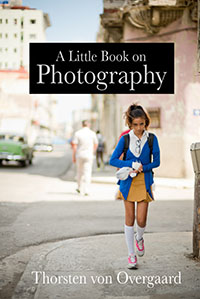
Order now - Instant delivery.
More info
★
★
★
★
★
★ |
|
It's a humorous understatement to call this
new eBook by Thorsten Overgaard for
"A Little Book on Photography".
It's a grand book, a history lesson, life experience, a biography and poetry book and brilliant photo book!
All in one beautiful package of 180 pages
to fire you up and get you to love
photography ... unconditionally!
"A Little Book on Photography"
eBook for computer, Kindle and iPad.
New release March 2017.
Intro price only $47 - 180 pages.
| |
|
|
| |
Buy Now

Instant Delivery |
|
| |
|
|

|
|
| |
|
|
References on transport of batteries:
FAA (Federal Aviation Administration) regulations for carry-on
1. Passengers may carry all consumer-sized lithium ion batteries (up to 99.9 watt hours per battery). This size covers AA, AAA, cell phone, PDA, camera, camcorder, handheld game, tablet, portable drill and standard laptop batteries.
2. Passengers can also bring two (2) larger lithium ion batteries (100-160 watt hours per battery) in their carry-on. This size covers the largest aftermarket extended-life laptop batteries and most lithium ion batteries for professional-grade audio/visual equipment.
FAA regulations for checked in vs. carry-on baggage
1. All the batteries above are allowed in checked-in baggage as long as they are installed in the equipment.
2. Spare lithium metal and lithium ion/polymer batteries are prohibited in checked in baggage.
3. There is no limit to the number of most consumer-size batteries or battery-powered devices that a passenger can carry for personal use. The larger lithium ion batteries are limited to two (2) batteries per passenger.
IATA Dangerous Goods regulations
IATA (International Air Transport Association, founded 1945 in Cuba) is the organization who deals with batteries as cargo (i.e. large shipments of batteries on non-passenger airplanes).
Download the Lithium Batteries as Cargo in 2016 Update III (pdf)
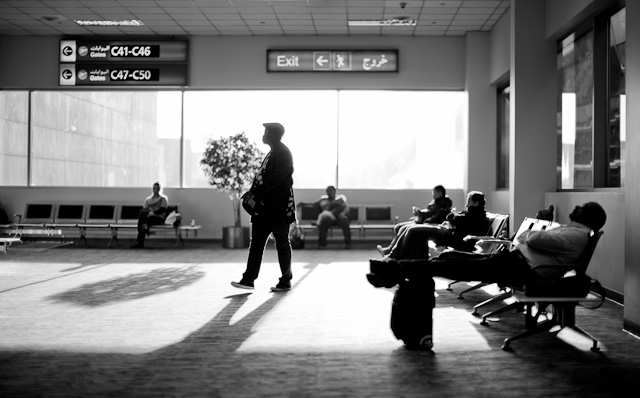
Hanging out in the Dubai airport. Leica M Type 240 with Leica 50mm Noctilux-M ASPH f/0.95. © 2015-2016 Thorsten Overgaard.
![]()
